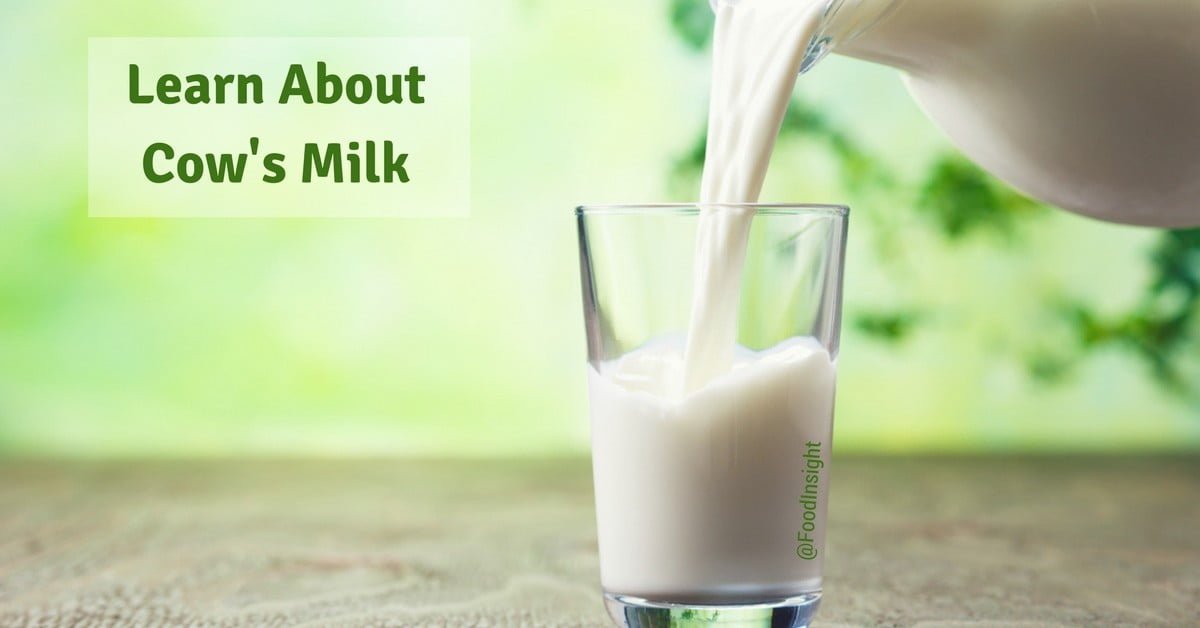You may recall hearing someone years ago tell you, “Milk does a body good.” Most of us grew up drinking milk at home, school, at summer camp and all those other places kids go. But did you ever ponder where milk comes from?
Well, we’ve told you in the past that safe milk starts on the farm. It’s true; dairy cows produce the milk we pick up from our neighborhood grocery stores and markets. Many of us don’t drink cow’s milk due to preference, lactose intolerance or allergies. We also like a variety of other “milks.” On the rise in popularity are almond milk, coconut milk and soy milk. Each of these is produced without a cow in sight, but all with safety and nutrition in mind.
Because so many of us seem to enjoy our milk from a variety of places, we thought it would be a good idea to visit the production and nutrition side of each of these milks with a new series. The first installment focuses on cow’s milk. Stay tuned for almond, coconut and soy.
Where Our Milk Story Begins
You already know that milk comes from milking a cow. But how about a little insight into how this happens? Lactation (milk accumulation/let-down in the cow’s udder) for dairy cows occurs in parallel with the cow’s reproductive cycle. Once a female cow has a calf (baby cow), she is ready to begin producing milk. Secretion of milk in a cow’s udder actually begins shortly before birth of the cow, so that the calf can begin to feed right after birth. The cow then continues to give milk for around 10 months. Milk production gradually decreases and, after those first 10 months, it can drop by up to half its peak volume.
Got Nutrition?
Milk is a nutrition powerhouse. Because of this, the 2015-2020 Dietary Guidelines for Americans recommend that we consume three servings of non-fat or low-fat dairy each day. A cup of low-fat, 1-percent milk (which counts as one dairy serving) contains about 100 calories and more than 8 grams of protein. Milk also provides a few “shortfall” nutrients (calcium, vitamin D and potassium) that have been identified by the Dietary Guidelines as nutrients of concern, as well as other micronutrients like vitamin A and riboflavin.
Moo Moo Here, Milk Milk There
Dairy cows are raised on farms across the country. Farmers follow federal regulations on how to feed cows, provide them with proper surroundings and receive veterinary care to monitor cows’ health and treat them as needed. The appropriate and hygienic care for the cows begins the safety protocol in milk production.
The cows of today, which have been bred for more than highly lactating breed we depend upon, produce roughly six times as much milk as primitive cows. The U.S. Department of Agriculture’s National Agricultural Statistics Service (NASS) recently reported that the annual production of milk in for the United States was 215 billion pounds, 1.4 percent above 2016.
Organic Milk: To Drink or Not to Drink
Many people prefer to drink organic milk over regular milk. Both are a safe, regulated and nutritious way to drink cow’s milk. There is not a safety or regulatory advantage in drinking organic milk over non-organic. USDA’s Agricultural Marketing Service (AMS) administers programs that facilitate the efficient, fair marketing of all U.S. agricultural products including milk. AMS’s organic rules and regulations establish the standards that govern farmers’ production of organic milk. Specifically, Federal Milk Marketing Orders are rules requested by industry to stabilize conditions for fluid milk. The Orders note that, “they make the buying and selling of fluid milk an orderly, dependable process for dairy farmers, milk dealers and consumers.”
So what is the real difference? Well, for milk to be labeled as organic, it must come from a cow that has never been treated with antibiotics (if a cow does become sick, it must be treated under veterinary care, but then its milk cannot be labeled as organic), has never been given hormones, and has been fed at least 30 percent of its diet on pasture, and any feed used must be certified organic as well.
This is pretty much how regular milk is produced too, but organic feed is not required and antibiotic use is allowed. If antibiotics are used, which is under federal regulation guidance and with veterinary care, then once the cow’s treatment is over, it can return to its “normal duties.” Neither organic nor non-organic milk contain antibiotics. In January 2017, the U.S. Food and Drug Administration (FDA) completed the implementation of Guidance for Industry #213, which prohibits the use of antimicrobials and antibiotics for production purposes and changed the marketing status of these medicines from over-the-counter to prescription status, meaning the drugs can only be administered via a veterinarian’s prescription. Notably, a recent FDA report has shown that sales of antibiotics and antimicrobial treatments used in animals raised for food dropped in 2016 from the previous year.
Another difference between organic and non-organic milk, as noted, is the use of hormones. Non-organic milk production does allow hormone use to ensure steady cow reproduction and, hence, milk production. But the uses are regulated, and milk is regularly tested to ensure that any hormone levels are safe and low. We should mention that any animal product you consume — organic or not — may contain a low level of hormones because hormones are naturally occurring in all animals (and people).
Final Thoughts
So now you know plenty about the “white gold” you enjoy with cookies, cereal and hot chocolate. Cow’s milk is a regulated, safe and nutritious way to enjoy a beverage or meal. Stay tuned for other articles in this series as we take a closer look at the production and nutrition of alternatives to cow’s milk.
This blog includes contributions from Megan Meyer, PhD.
